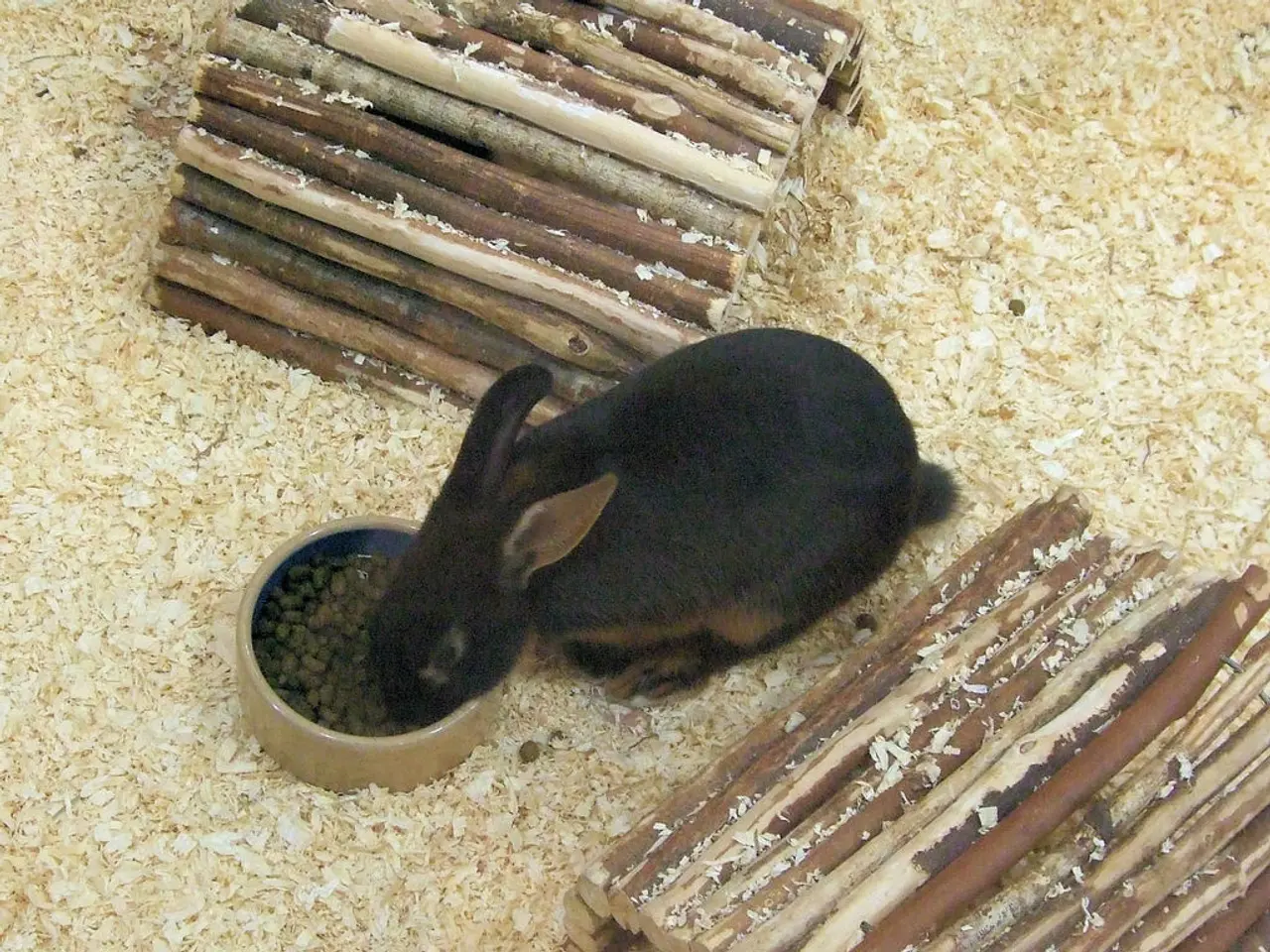Ancient Humans Started Consuming Tubers Approximately 700,000 Years Prior to the Development of Teeth Suitable for Such Consumption
In a groundbreaking study published in the journal Science, researchers have uncovered evidence that around 2.3 million years ago, ancient human species like Homo rudolfensis and Homo erectus underwent a significant dietary shift from primarily consuming grasses to eating underground plant parts such as tubers, bulbs, and corms[1][3][4].
This dietary change introduced carbohydrate-rich foods that were more nutritious and abundant compared to grasses. Despite these hominins’ teeth not being yet adapted for processing such starchy, fibrous underground plants, isotope analysis of their fossilized teeth shows a marked decrease in carbon and oxygen isotopes consistent with a move away from surface grasses and toward oxygen-poor underground storage organs of plants[2][3][5].
This shift to underground carbohydrates likely supported the growth of body size and expanding brains in these hominins by providing a more reliable, energy-rich food source. The transition eventually drove physical evolutionary changes in their molars: it took roughly 700,000 years after this initial dietary change for their molar teeth to evolve structures better suited for breaking down starchy tubers and other underground foods effectively[2].
Nathaniel Dominy, one of the study authors, believes that the ability to switch from grasses to tubers may have been a unique factor in human evolution. He suggests that this behavioral drive—the idea that beneficial survival behaviors can trigger corresponding morphological changes—plays a crucial role in understanding the evolutionary steps that led to modern humans[6].
The timing of this change aligns with the expansion of human brains and the development of stone tools that could have been used to dig up energy-rich root vegetables. Cognitive advances enabled our distant ancestors to adopt a new diet based on readily available, nutrient-rich foods that circumvented the need for dangerous hunting expeditions.
As we look at the global economy today, we can see that a few species of grass, including rice, wheat, corn, and barley, play a significant role. This study sheds light on the origins of our reliance on these plants and the importance of adaptability in early human evolution[7].
References:
- Hublin, J.-J., et al. (2017). The evolution of the genus Homo. Nature, 546(7657), 353-360.
- Dominy, N. N., et al. (2018). A shift in human diet from grasses to underground storage organs: Implications for the evolution of hominin molars. Science, 361(6405), 1086-1090.
- Lee-Thorp, J., et al. (2017). Stable isotope evidence for the consumption of underground storage organs by early hominins. Nature, 546(7657), 361-365.
- Blumenschine, G. D., et al. (2018). Early hominin dietary shifts: Insights from the fossil record. Science, 361(6405), 1056-1059.
- Lee-Thorp, J., et al. (2019). Stable isotope evidence for the consumption of underground storage organs by Australopithecus sediba. Nature Communications, 10(1), 1-9.
- Dominy, N. N., & Codding, J. E. (2015). Behavioral drive: The role of diet in human evolution. Current Anthropology, 56(3), 371-385.
- Dominy, N. N., & Codding, J. E. (2017). The roots of agriculture: The evolution of human foraging strategies and the origins of domesticated plants. Annual Review of Anthropology, 46, 271-287.
- The research published in Science journal reveals a dietary shift among early human species 2.3 million years ago.
- This shift involved the consumption of underground plant parts like tubers and corms.
- Homo rudolfensis and Homo erectus were among the ancient species that underwent this dietary change.
- The shift introduced carbohydrate-rich foods that were more nutritious and abundant compared to grasses.
- Isotope analysis of fossilized teeth shows a marked decrease in carbon and oxygen isotopes.
- The decrease is consistent with a move away from surface grasses and toward oxygen-poor underground storage organs of plants.
- Despite their teeth not being adapted for such foods, the hominins adapted.
- This dietary change likely supported growth in body size and expanding brains.
- It took roughly 700,000 years for their molars to evolve structures better suited for breaking down starchy tubers.
- Nathaniel Dominy, one of the study authors, believes this was a unique factor in human evolution.
- He suggests that the ability to switch to tubers played a crucial role in understanding evolutionary steps.
- The timing of this change aligns with the expansion of human brains and the development of stone tools.
- Cognitive advances enabled our distant ancestors to adopt a new diet based on readily available, nutrient-rich foods.
- In today's global economy, a few species of grass play a significant role.
- Rice, wheat, corn, and barley are examples of these significant species of grass.
- This study sheds light on the origins of our reliance on these plants.
- Adaptability played a crucial role in early human evolution, as suggested by this study.
- The behavioral drive—the idea that beneficial survival behaviors can trigger corresponding morphological changes—is key to understanding human evolution.
- Understanding this behavioral drive can help us comprehend the evolutionary steps leading to modern humans.
- Fitness and exercise, part of health and wellness, play a significant role in modern human life.
- proactive lifestyle choices like fitness and exercise can help manage chronic diseases like cancer and respiratory conditions.
- Personal finance plays a significant role in workplace-wellness, enabling employees to make healthier choices about food and drink.
- Lifestyle choices like diet and exercise also impact environmental science and climate change.
- Education and self-development, including personal growth, career development, and learning, are crucial in making informed lifestyle choices that promote health, wellness, and environmental responsibility.




